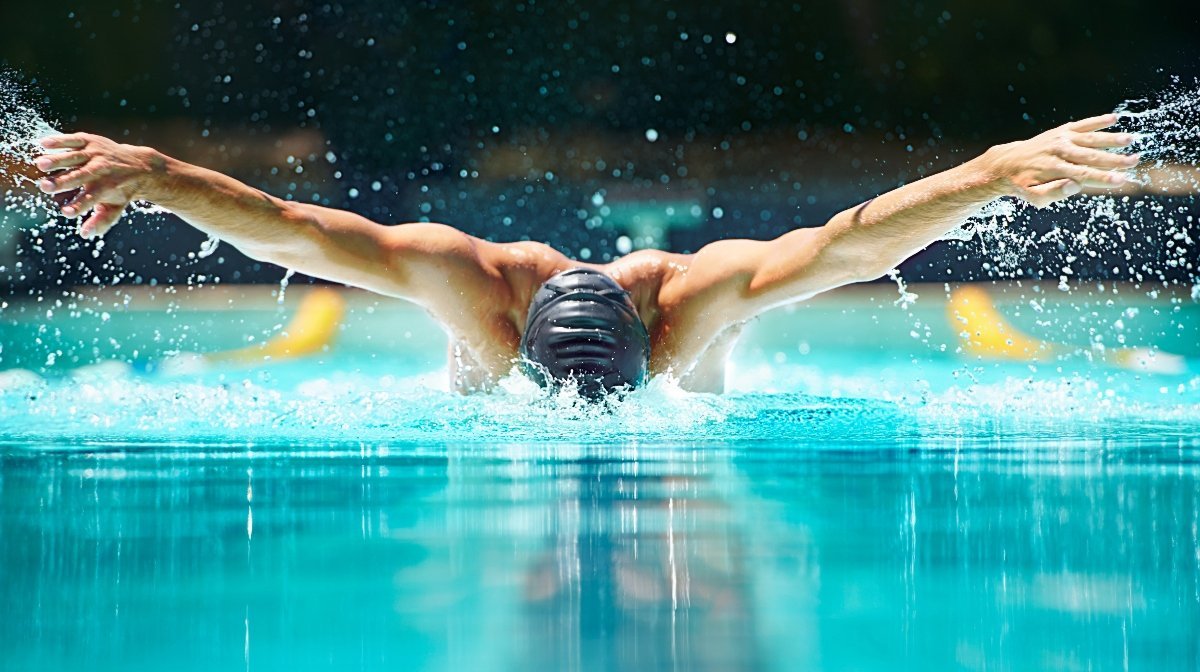Swimming is not just an essential life skill; it is also a highly competitive sport and a great way to stay fit. The techniques used in swimming play a crucial role in determining speed, efficiency, and overall performance in the water. Whether you’re a beginner or an experienced swimmer, understanding the various swimming techniques and knowing which is the fastest can significantly improve your skills and enjoyment. In this article, we’ll explore popular swimming techniques, their benefits, and how you can master the fastest swimming technique.
Popular Swimming Techniques
Swimming techniques, also called strokes, have been developed to cater to different needs, including speed, endurance, and leisure. Here are the four main strokes commonly practiced:
-
Freestyle (Front Crawl)
Freestyle is the most popular and versatile swimming technique. It involves alternating arm movements in a windmill-like motion, combined with a flutter kick from the legs. The swimmer’s face is submerged, and they turn their head to the side to breathe.
Benefits:
- Fastest and most efficient stroke for speed and distance.
- Builds upper body and core strength.
- Suitable for all levels of swimmers.
-
Backstroke
In backstroke, swimmers float on their back and use alternating arm movements, combined with a flutter kick. Breathing is easier as the face remains above water.
Benefits:
- Improves posture and spinal alignment.
- Engages back, shoulder, and leg muscles.
- Provides variety and helps with muscle recovery.
-
Breaststroke
Breaststroke involves a circular arm motion underwater and a frog-like kick. Swimmers’ heads come out of the water regularly for breathing, making it less intimidating for beginners.
Benefits:
- Focuses on lower body strength.
- Energy-efficient and easy to learn.
- Ideal for long-distance and recreational swimming.
-
Butterfly
The butterfly stroke is one of the most challenging techniques, requiring simultaneous arm movements and a dolphin-like kick. It demands precise timing and considerable strength.
Benefits:
- Builds full-body strength, especially shoulders and core.
- Improves flexibility and stamina.
- Great for competitive swimmers looking to challenge themselves.
The Fastest Swimming Technique
When it comes to speed, the freestyle or front crawl is universally acknowledged as the fastest swimming technique. Let’s delve deeper into why freestyle outshines other strokes and how you can master it to achieve top performance.
-
Streamlined Body Position
Freestyle’s horizontal position minimizes resistance and drag, allowing swimmers to glide effortlessly through the water. Proper body alignment, with the head slightly submerged and hips high, creates an efficient path for movement.
-
Efficient Arm Movements
The alternating arm motion ensures continuous propulsion. Each stroke should be long and powerful, with the hand entering the water fingertips-first to reduce resistance. Focus on completing each pull through the water to maximize force.
-
Flutter Kick
A steady flutter kick provides balance and additional propulsion. While the legs don’t contribute as much to speed as the arms, they play a vital role in maintaining stability.
-
Breathing Technique
Efficient breathing is critical in freestyle. Rotate your head slightly to the side during an arm recovery phase, ensuring minimal disruption to your body position. Practice bilateral breathing (alternating sides) to develop a balanced stroke.
-
Mental Focus and Endurance
Freestyle swimming requires a combination of technique and stamina. Consistent practice and focus on form can help swimmers sustain speed over longer distances.
Tips to Improve Your Freestyle Technique
-
Master the Basics
Before focusing on speed, ensure you have the fundamentals of freestyle swimming right. Practice drills like “catch-up freestyle,” where one arm waits at the front while the other completes a stroke, to refine your technique.
-
Work on Your Kick
A strong kick can enhance your propulsion and stability. Use a kickboard to practice flutter kicks and build leg strength.
-
Focus on Body Rotation
Efficient freestyle swimming involves rotating your body along the longitudinal axis. This rotation helps generate power from the core and reduces strain on the shoulders.
-
Incorporate Breathing Drills
Breathing is a common challenge for swimmers. Practice exhaling fully underwater and timing your inhalation with your arm movement. Breathing every three strokes can help maintain a rhythm.
-
Use Swim Aids
Tools like pull buoys, paddles, and snorkels can help improve specific aspects of your technique. For example, a pull buoy helps isolate arm movements, allowing you to focus on your stroke.
-
Analyze and Correct Your Form
Video analysis or feedback from a coach can provide valuable insights into your technique. Identifying areas for improvement can help you fine-tune your stroke.
The Importance of Training and Consistency
Swimming, like any sport, requires regular practice to see improvement. Here are some additional tips to enhance your overall swimming performance:
-
Warm-Up and Cool Down
Start each session with a warm-up to prepare your muscles and end with a cool-down to aid recovery.
-
Cross-Training
Activities like yoga, pilates, or weight training can improve flexibility, strength, and endurance—essential attributes for swimming.
-
Set Goals
Whether it’s improving your speed, mastering a technique, or completing a certain distance, setting clear goals keeps you motivated.
-
Stay Hydrated and Nourished
Swimming is a full-body workout that can deplete your energy. Drink water and eat nutrient-rich meals to fuel your sessions.
-
Rest and Recovery
Overtraining can lead to burnout or injuries. Ensure you’re getting adequate rest between intense sessions.
Why Learn Multiple Techniques?
While freestyle is the fastest and most widely used stroke, learning multiple techniques can make you a well-rounded swimmer. Each stroke engages different muscle groups, providing a balanced workout. Moreover, varying your techniques prevents monotony and keeps swimming enjoyable.
For example, backstroke is excellent for recovery, breaststroke for endurance, and butterfly for strength-building. Competitive swimmers often train in all four strokes to excel in medley events.
Conclusion
Mastering swimming techniques is a journey that requires patience, practice, and perseverance. The freestyle stroke, being the fastest swimming technique, is a must-learn for anyone aiming to improve their speed and efficiency in the water. However, exploring other strokes can enhance your skills and provide a holistic swimming experience.
Whether you swim for fitness, competition, or leisure, focusing on proper form and consistency will help you achieve your goals. So dive in, keep practicing, and enjoy the incredible benefits of swimming!



